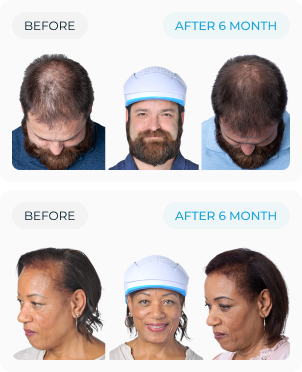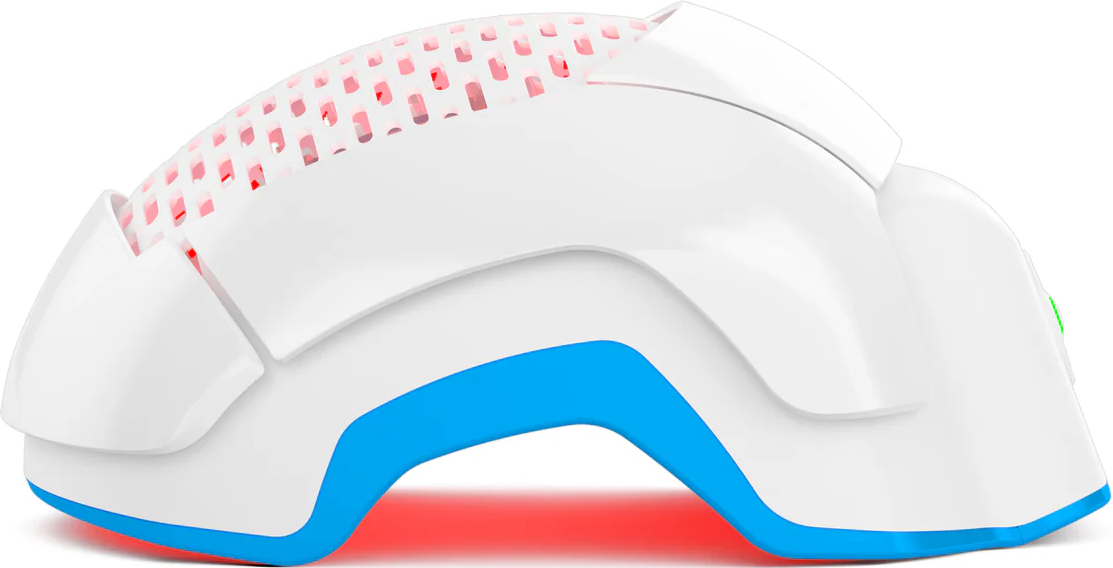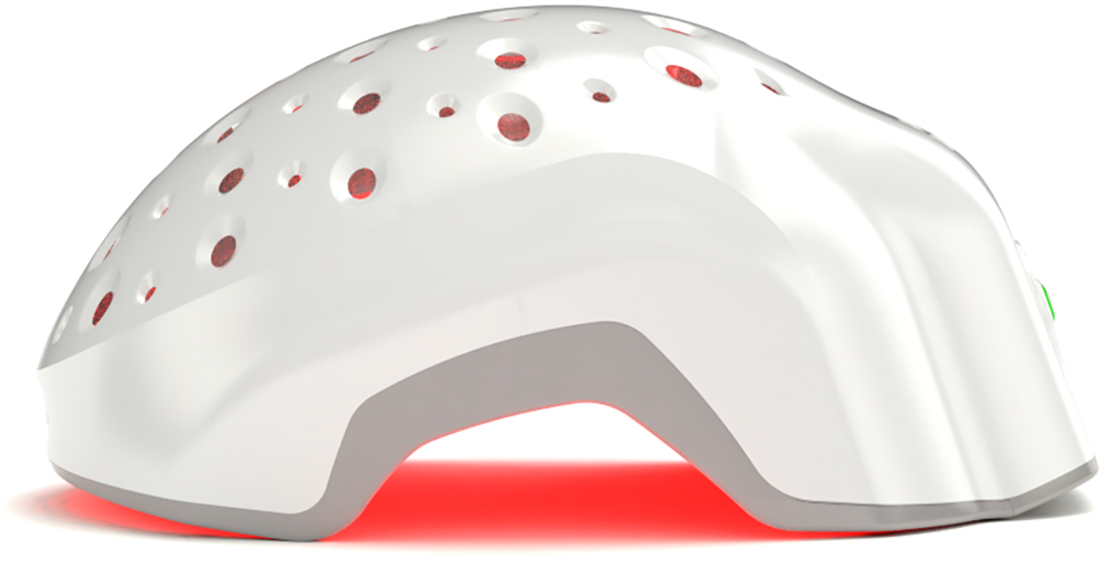Frontal hair loss doesn’t just happen — it creeps in, confuses you, then refuses to leave. One day your hairline looks familiar. Then it doesn’t. And no, this isn’t always “just aging” or “probably stress.” Sometimes it’s frontal fibrosing alopecia — an inflammatory, scarring hair loss condition that damages your follicles, and causes hair loss at the front and sides of your scalp.
Frontal fibrosing alopecia is subtle at first. It starts at the temples and thins in a band-like pattern. It can also affect other parts of your body like eyebrows. Most people miss it until the damage is permanent — not because they weren’t paying attention, but because no one told them what to look for.
This article does explains about what frontal fibrosing alopecia really is, how to spot it early, what causes it, and which treatments are effective for such type of frontal hair loss.
What Is Frontal Fibrosing Alopecia?
Frontal fibrosing alopecia is a specific, clinically recognized form of scarring alopecia that targets the frontotemporal scalp. It damages your hair follicles and can cause permanent hair loss. This condition doesn’t just thin your hairline; it destroys it. And without treatment, it keeps on worsening over time.
What sets FFA apart is how it quietly shuts down follicles, leading to permanent frontal hair loss. Inflammation builds around the hair root, cuts off its function, and eventually leaves behind shiny, scarred skin that refuses to support hair growth. It’s often mistaken for age-related hair loss, especially in postmenopausal women, but it's a whole different beast — and one that doesn’t play fair.
FFA also has strong ties to lichen planopilaris, another inflammatory disorder of the scalp. Some experts even consider it a subtype. Both conditions damages your hair follicles and make it unable to grow hair. The earlier you diagnose it, the more hair you can save from losing.
Who Is Mostly Affected By Frontal Fibrosing Alopecia?
Frontal fibrosing alopecia (FFA) primarily affects women after menopause, usually starting around age 50. However, this condition isn't limited to older women; it can also be seen in younger women, and it tends to appear earlier in women of African descent. While it's very rare, a few cases have been reported in men as well.
Individuals with the following conditions may be at higher risk of FFA:
- A family member with FFA
- Rosacea on forehead
- Thyroid disease
- Type 2 diabetes
Frontal Fibrosing Alopecia in Men: What’s Different?
This condition isn’t just a “female issue.” Frontal fibrosing alopecia in men gets missed constantly — because most men assume receding hairlines are normal. But if it’s linear, shiny, inflamed, or accompanied by beard thinning or eyebrow loss, there’s more at play than the usual causes.
Men also tend to present symptoms later, when scarring has already advanced. Androgens play a role here too, so some men respond well to antiandrogens and oral anti-inflammatories. But again, timing matters more than testosterone levels.
What Are the Early Symptoms of Frontal Fibrosing Alopecia?
The worst part about FFA is it starts subtly. Most people don’t realize they’re in the danger zone until their hairline has already shifted.
1. Receding Hairline at the Temples
FFA doesn’t follow the usual male-pattern playbook. It creates a horizontal, often symmetrical loss pattern that stretches across the forehead and temples. Unlike androgenetic alopecia, this receding edge can appear inflamed or unusually smooth. No widow’s peak theatrics — just a stealthy, linear retreat.
2. Eyebrow and Body Hair Loss
Yes, frontal fibrosing alopecia symptoms often include your eyebrows. When you start losing tail-end brow hair for no clear reason, that’s a clue. Some patients also report thinning arm and leg hair, or facial vellus hairs (those baby-fine strands). If the hair loss isn’t just local — start asking better questions.
3. Redness, Flaking, or Itching
This isn’t dry scalp. The itchiness and redness along the frontal hairline may be subtle, but it’s a tell. Inflammatory symptoms like perifollicular erythema or scaling aren’t always severe, but they point to underlying follicular damage — and that damage stacks fast.
What Are the Causes of Frontal Fibrosing Alopecia?
The cause of FFA is still being studied. But that doesn’t mean we’re totally in the dark. Here are the common causes of FFA:
1. Hormonal Factors
There’s increasing evidence linking frontal fibrosing alopecia and hormones, especially in postmenopausal women. Changes in estrogen levels, androgen sensitivity, and local hormone metabolism all seem to influence follicular vulnerability. What we don’t fully know is why the frontal hairline is the primary target. But the hormonal fingerprints are everywhere.
2. Autoimmune Activity
FFA behaves like an autoimmune disease — the immune system attacks the hair follicle as if it doesn’t belong. It’s no coincidence that many people with FFA also report thyroid dysfunction, lupus, or vitiligo. The immune system goes rogue, and the scalp pays the price. It’s also why FFA sits so close to lichen planopilaris on the diagnosis spectrum.
3. Environmental and Topical Triggers
No, this one isn’t internet speculation. There’s ongoing research into the link between frontal fibrosing alopecia and sunscreen ingredients — particularly facial products that contain titanium dioxide or chemical UV filters. While not yet definitive, the theory is this: certain topicals may act as antigens, triggering localized immune responses in genetically susceptible individuals. More research is needed, but it’s not a bad idea to check your skincare labels.
How to Diagnose Frontal Fibrosing Alopecia?
A diagnosis isn’t just based on hair loss. It’s based on where it’s happening, what the skin looks like, and how fast it’s progressing.
A certified dermatologist will use clinical observation, trichoscopy (a magnified scalp exam), and often a scalp biopsy to confirm. That biopsy checks for perifollicular inflammation and scarring — the two important signs of FFA.
Your dermatologist may also do other tests like:
- Hair pull test to see how many hairs fall out
- Remove a small bump from your face and examine it under a microscope
Diagnostic criteria for Frontal Fibrosis Alopecia:
Major criteria:
- Scarring hair loss of the frontal, frontotemporal, or temporal scalp in the absence of follicular keratotic papules on the body
- Scarring loss of eyebrow hairs
Minor criteria:
- Redness and scale around hair follicles
- Characteristic histology on skin biopsy
- Similar clinical signs on other body parts
- Noninflammatory facial papules
- Itch or pain
Proper diagnosis is crucial because if you treat this like typical alopecia, you’ll lose time and hair you could’ve saved.
What Are the Treatment Options for Frontal Fibrosing Alopecia?
The truth: there’s no cure. But frontal fibrosing alopecia treatment options do exist, and some are surprisingly effective at slowing — or even halting — the progression.
1. Anti-Inflammatory Medications
These are the frontlines. Topical corticosteroids and calcineurin inhibitors can reduce inflammation in active areas. Oral meds like hydroxychloroquine, low-dose doxycycline, or even isotretinoin have shown success in controlling immune overactivity. These don’t reverse damage — they put the brakes on further destruction. Always speak with your doctor before starting any systemic therapy.
2. Hormonal Therapies
In some patients, particularly women, frontal fibrosing alopecia and hormones overlap in a way that responds to 5-alpha-reductase inhibitors like finasteride or dutasteride. These help reduce androgen impact on hair follicles, and when used under proper guidance, can significantly slow progression.
3. Laser Phototherapy (LPT)
Laser therapy for hair loss isn’t just for male pattern baldness. In cases of FFA that haven’t yet scarred, cold laser therapy (LPT) may help stimulate blood flow, reduce inflammation, and support remaining follicle function — especially when used alongside other treatments.
LPT delivers low-level, non-thermal light directly to the scalp, helping to boost cellular energy (ATP) at the follicular level. It’s painless, drug-free, and FDA-cleared for androgenetic alopecia, but dermatologists are increasingly incorporating it as a supportive tool for inflammatory alopecias too — especially when caught early. Consult with your doctor before any treatments!
Hair growth device like Theradome applies the same laser phototherapy principles to target the scalp, promoting follicle activity without surgery or chemicals. By delivering consistent light therapy, Theradome offers a convenient way to support hair regrowth, especially along the frontal hairline, making it a popular choice for people looking to tackle hair loss naturally.
4. Regrowth Support
Frontal fibrosing alopecia regrowth is only possible in areas where follicles haven’t scarred. Minoxidil may help support these follicles, especially when inflammation is under control. PRP (platelet-rich plasma) therapy is also being explored — results vary, but some patients see positive responses. Hair transplants? Only once the condition is fully stabilized, or you’ll be transplanting into a war zone.
Frontal fibrosing alopecia regrowth is only possible in areas where follicles haven’t scarred.
•Minoxidil may help support these follicles, especially when inflammation is under control.
•PRP (platelet-rich plasma) therapy is also being explored — results vary, but some patients see positive responses.
•Hair transplants work only once the condition is fully stabilized, or you’ll be transplanting into a war zone.
Long-Term Management Tips for Frontal Fibrosing Hair Loss
Think of managing FFA like controlling a slow-moving fire. You don’t need constant panic, but you do need vigilance.
- Use gentle, fragrance-free scalp products.
- Avoid trauma: no tight styles, aggressive brushing, or harsh chemicals.
- Consider using mineral-based sunscreens if you're concerned about triggering topicals — a nod to the frontal fibrosing alopecia and sunscreen discussion.
Keep monthly scalp photos. If your hairline starts shifting again, you’ll know it before it gets irreversible.
Can You Regrow Hair Lost Due to Frontal Fibrosing Alopecia?
Here’s the hard truth: once a follicle scars over, it’s done. No regrowth. What you can do is protect the follicles that are still holding on. Early treatment gives you a shot at keeping what’s left and maybe even improving density in non-scarred zones.
If you’re seeing the signs, don’t waste time with over-the-counter bandaids or generic “hair growth” hacks. Frontal fibrosing alopecia progression isn’t self-correcting. It’s stealthy, aggressive, and absolutely worth confronting before it wins.
Conclusion
Frontal fibrosing alopecia doesn’t care if you’re busy, skeptical, or “not totally sure yet.” Once it starts, it doesn’t slow down unless you stop it — early. This isn’t just about a receding hairline; it’s about inflammation, scarring, and permanent follicle shutdown. You’ve now seen the symptoms, the causes, the science, and the treatment options that actually hold weight. Whether it’s eyebrow loss, temple recession, or a scalp that’s started flaking where it shouldn’t, the signs are there for a reason. The key isn’t panic — it’s precision. Get diagnosed early, act decisively, and don’t let this thing steal more hair than it already has.

























